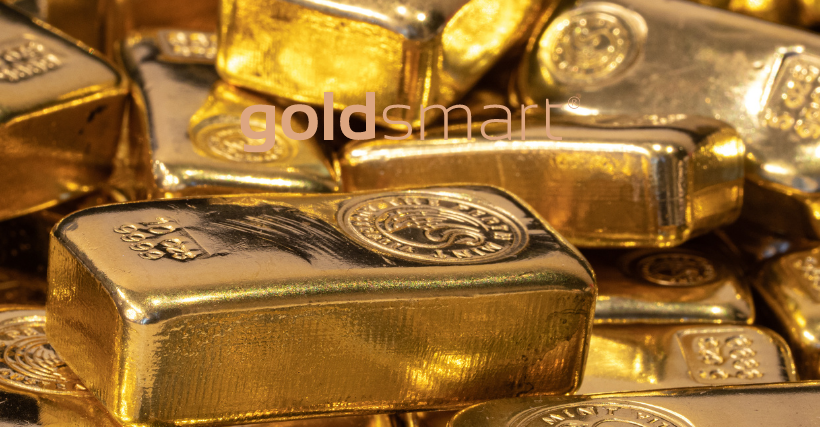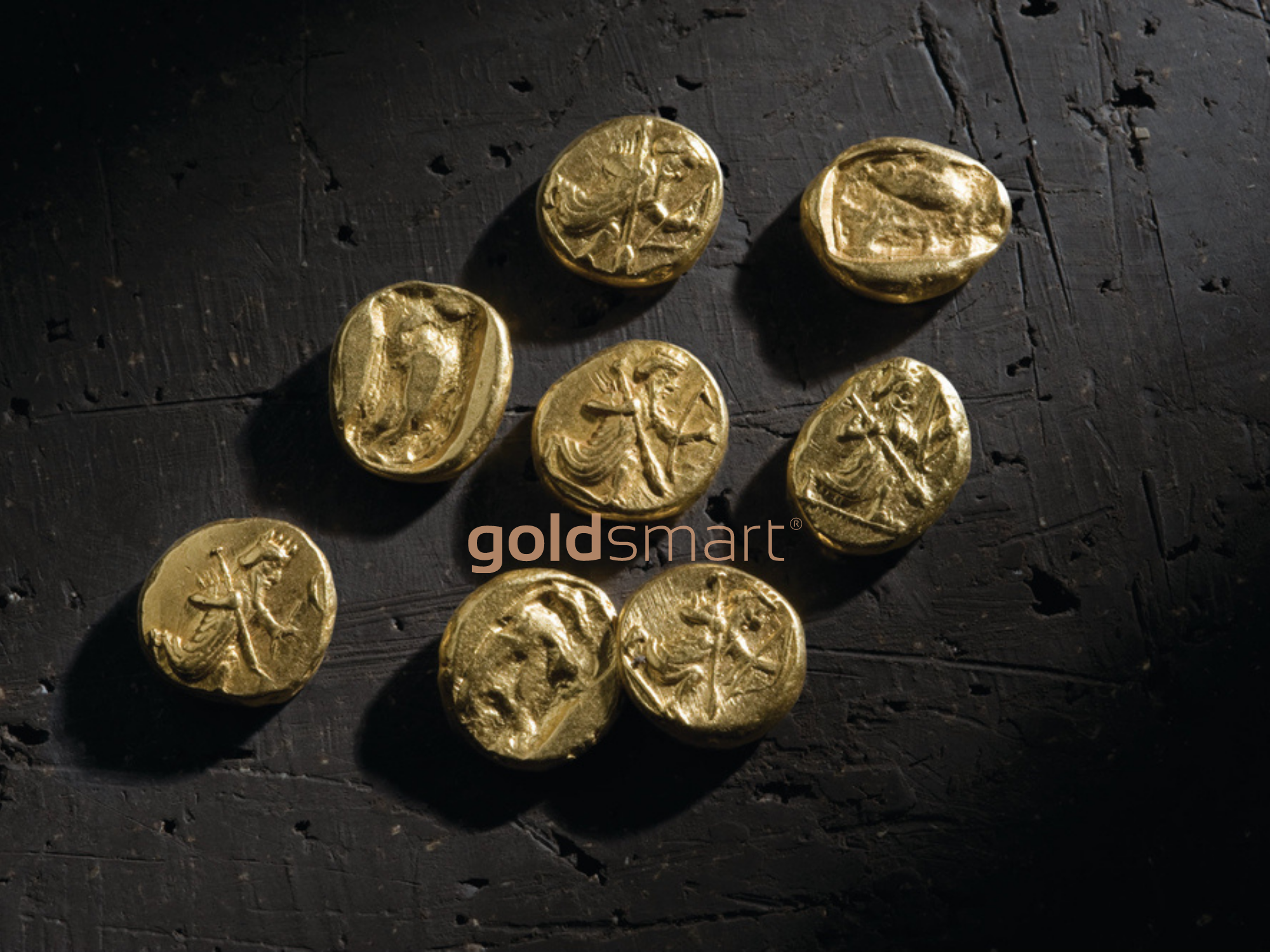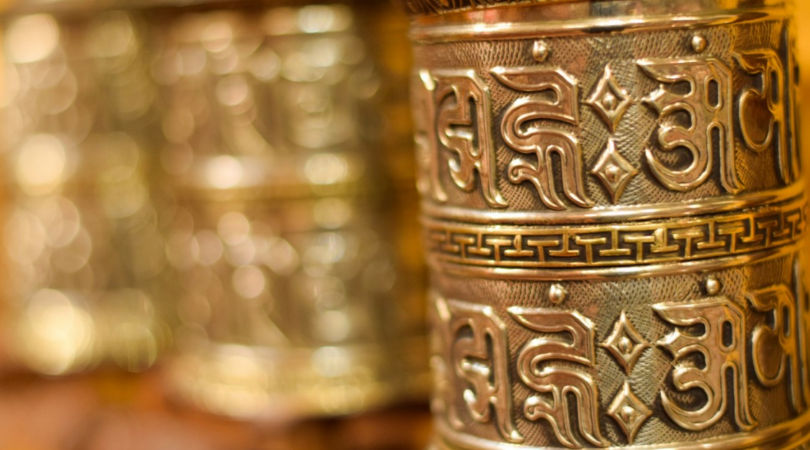
Gold as an elemental metal historically results from the earth’s inner machinations, created by an intense process of nuclear fusion, high energy, heat, and pressure. In short, it’s not any place a human could even go near from thousands of miles away. These are the dynamics for what it takes to create a soft metal; just imagine what it took to create harder metals like iron! That said, the world’s supply of gold did not just appear some 500 years ago as people started digging. It has been sitting in the earth’s crust for well over 4.5 billion years ago as atoms started bonding with each other to make specific elements. The results have produced the entire natural chemical table as we know it today, and that’s just what is on earth alone. We have no idea what else is possible in the universe.
As the earth continued to gyrate and expel its inner material through the new crust and volcanic or geological actions, gold moves from inside the planet towards the outside. And, after millions of years of erosion and weathering or exposure, gold eventually became accessible by the minuscule impressions humans made to the earth’s crust mining to find it or access the yellow metal. Otherwise, it also became available as the earth’s crust broke down, most notably with erosion. That weathering process continues to deposit small bits of gold, better known as nuggets, in watersheds and streams which ultimately becomes the gold people find panning in rivers.
The deepest presence of gold known is some 1.5 kilometres underground, deep in caves and drill holes that take huge equipment and effort to operate. Another major location tends to be open mines that open up the earth about 50 metres down, exposing gold that otherwise is probably unreachable to 99 percent of the population given the effort it takes to remove that much earth and expose it. However, even when found, gold is not a metal that one just picks up and throws into a melting bin to produce gold bars with. It has to be separated from the rocks it has bonded with, and that process takes further work and effort. As a result, at its peak, the world produces maybe 2,500 tonnes of new gold annually.
Gold as mined metal is not easy to find either. Despite the lore of just going to the nearest river and panning if it comes from the mountains, the reality is that gold is very hard to find. Modern-day gold-hunting doesn’t happen with a lot of walking or driving around. Instead, companies use geologists who scrutinize and examine thousands of images from satellite photography. When, with the trained geology eye, an expert spots signs of a potential gold presence, folks then have to go out to the location and survey it. They spend days walking the area, taking samples, looking for physical signs of gold presence or the materials that would signal high probability like quartz, and then they bring all the information back to analyze. Only with a good amount of processing and data-crunching do companies then pinpoint a location for test-digging to actually pursue the gold itself. Even then, many test-dig sites are failures, and everyone goes back to square one again to do it all over for the next site. All of this rarity and challenge adds to gold’s demand in modern life, of course, and increases the chance of fraud and fake gold as well.

Solar System Origins
If one wants to get astro-mechanical about gold, there’s plenty of material on that topic going around as well. Due to being a metal, gold was originally created inside stars, at least how the astronomical perspective theorizes the matter occurred. This process, better known technically as nuclear fusion, delt with gold in its primary elements in the form of hot gasses first; the yellow metal didn’t even exist yet in this phase. In the entire process of moving from lighter elements to heavier ones as stars churned and burned through their millions and millions of years of life, eventually, the bigger solar beasts started developing elements in the form of metals, iron being one of the most significant. These processes were not peaceful, consistent events; they blew apart violently and supernovas were quite common in one considered them in the context of billions of years being a moment. As supernovas occurred, the explosion of stars propelled atoms of newly created elements far and wide, and that expulsion seeded the known universe with its first atoms of metals, including gold. Now, this entire theory, taking in a highly summarized context might seem about as fantastical as some alchemist figuring out how to spin gold with magical spells and ingredients in a tower somewhere. However, when all the above is described in the framework of physics and mathematics, that’s when it shifts from insanely imaginative to the highly formulated theoretical work of astrophysics as we know it today.
Is this idea of gold from nuclear fusion silly nonsense? We have the proof on our own planet. In fact, much of it can still be found in the deserts of Egypt. Centuries ago, a massive meteor plowed into the desert area which, as we know today, had a significant amount of sand, better known as silicon on the elemental charts. When sand is heated to tremendously hot temperatures, it turns to glass. When it gets superheated in the nuclear blast of a colliding meteor with earth, and all that energy suddenly released, it produces what is known today as Libyan Desert Glass. One of the most famous pieces of it was installed in ancient times as a scarab sculpture in a breastplate decoration that was worn by King Tutankhamen. So, if the energy of a meteor blast can produce glass from sand, it is quite possible for a supernova to create metals from hot gasses and free-flowing atoms in space.
Back to our astro-theory story, as the gravity of our home star, better known as the Sun, pulled material in a swirl around it, balls of material and eventually clumps begin to form, coalesce and become the first prototypes of planets that eventually make up the Solar System today. This process included lots of other material floating around in the System, including a couple of million meteorites that get pulled into the chaos and slammed together with Earth as well. Many of those include metals in them. The heavier material moved towards the center of the planetary clump while the lighter material stayed on the periphery. Ergo, metals start to concentrate inside the proto-Earth. This is all still being heated at incredible temperatures by energy release, melting, and re-melting metals again and again. The results end up being the high concentrations of metals flowing inside the earth’s center, to occasionally be pushed to the top through new crust formation or volcanic bursts and depositing the same inside rock on the earth’s crust.
The above, however, is not the only theory of how gold came about through astronomical forces. If one spends any amount of time in theoretical science about what things might have been like 4.5 billion years ago, he or she is going to find there are lots of well, thought-out theories and ten times as many not-so-well-through-out ideas as well floating around. From the more classic side of the theoretical arena, there is also the idea that gold was created by two neutron stars colliding with each other like a stellar car accident at high speed. When one star slammed into another, presumably a much bigger one, the smaller star was stripped and collapsed. As that occurred, the core of the consumed star is barreling into the bigger start with an incredible amount of additional energy. Some have tried to liken the idea of crushing and density-smashing that this would mean as stuffing Mount Everest into a soda cup or similar smaller size. The idea of that much force and energy release is beyond anything we have calculated possible to date. Yet that would be the gravity effect of a neutron star. The energy being released at the same time is what is referred to as gamma-ray bursting, which in essence is a huge solar-level explosion. When released, the event has the capability and power to create elements, like gold, easily among everything else that happens.

Mythical Originations
The ancient Greeks believed that gold was a product of purity on par with the gods. No surprise, they often adorned many of their idols and statues of Greek deities with gold. However, it was also seen as an extremely valuable commodity, and quite a bit of metal goods from cups and artwork to plates were made from gold as well. They were not the first, however. The Egyptians had been using gold long before, also as jewellery, decoration, art, and special items of value. In fact, because the Egyptians were so prolific users of gold for tombs and statues put in death storage with those that moved to the afterlife, their tombs centuries late became highly prized targets for looting and smashing to get to the same yellow metal. Thousands of tombs and their Egyptian cultural heritage have been destroyed as a result, with some of the most famous being highlighted by the earliest archaeological work done in the region during the 19th and 20th centuries.
In the New World, gold was frequently used for decoration, adornment, and status of high rank among indigenous cultures. The skills were highly prized, and crafters had social status protected by the ruling and warrior classes. It is not clearly known among Mesoamerican cultures whether the Olmec used gold, but the Maya definitely did. They traded it on a regular basis when it was not hammered and re-formed into jewellery and trinkets. The same skill and trade passed on to the Toltecs as well as many other tribes and peoples. By the time the Aztecs began to establish themselves in Mexico centuries later, gold was well understood as a usable and precious metal, rare in frequency and quite malleable for art and craft. The Aztecs often referred to gold as the perspiration or sweat from the Sun. The rest of the New World’s curse with gold is well documented in the annals of Spanish conquistador exploration both into Central and Southern America chasing indigenous gold.
Across the Pacific, the ancient Chinese were busy working with gold in a hammered, thin decorative fashion. The first records of gold being used were during the Shang dynasty, but it wasn’t considered quite as valuable as perhaps jade or even bronze, both every hard to come by even if one was a very powerful warlord at the time. The ancient Chinese eventually moved beyond brute force and realized that gold, when mixed with other metals, could produce form. Some of the earliest uses of gold found in Chinese archaeology includes cast gold mixed with silver for an alloying effect when creating earrings.
In the Russian steppes, the Scythians were the most famous for their ancient use of gold in that part of the world. Nomadic by nature and bonded with the use of the horse to be able to travel great distances, Scythians were well-known for their fighting process and frequently conquered neighboring people as well as each other, looting and taking what was available in the process. That produced a concentration of gold among the Scythians that ended up being prized as a material they could work with. A number of Scythian dignitaries and royalty buried with treasure and valuable items are now being found with multiple gold pieces among their funerary inventory, including worn jewellery and medallions. There is no record remaining of what the Scythians thought was the origin of gold, but they were quite adept at using it. Some of the most sought-after pieces of goldwork from the 7th to the 3rd century B.C. are Scythian and museums scramble as they can to obtain samples for their own collections when these become available.

With So Much Gold Dug Up, Has It All Been Found?
In a word, hardly. The amount of gold dug up and harvested today totals some 197,576 tonnes as of 2020, and 66 percent of that amount has been accessed since 1950 with greater automation and digging systems that were not present in earlier years. Overall, another 57,000 tonnes are known in location and kept in reserve but not yet actually dug up. So, give or take, the identified gold measures approximately 245,000 tonnes. That figure represents, by shared estimate, some 70 percent of the gold possible in the earth’s crust that can be accessed by people. In turn, that leaves 105,000 tonnes possible and left to be dug up. That does not include what might be in the oceans.
It is safe to say that most of the big gold lodes possible have likely been found and removed, leaving only those big gold deposits that take significant strip-mining or earth moving capability to get the rest of it out. Among the large mines available, the largest is in South Africa, which contains by estimate 30 percent of the remaining gold possible and available to dig up.
However, in the 21st century and the last 10 years, one of the biggest gold recoveries has not been from the ground but from our obsolete technology. Gold has been and continues to be used in an industrial sense in high tech. As those pieces and equipment become old and unusable, they go into the trash heap. Yet enterprising companies are realizing there’s money to be made finding and recovering the gold of old motherboards and similar, as well as other metals and materials. So tech recycling is starting to become a bit of a “mining” operation on its own and is likely to continue to increase as gold demand keeps going higher.
Fortunately, New Zealanders don’t need to swing a pickaxe, chisel, or sign on with a company in the middle of the boondocks to find gold locally. Gold Smart has a wide and diverse inventory of gold available to Kiwi buyers interested in the precious metal in all forms. To find out more give us a call or visit us online.